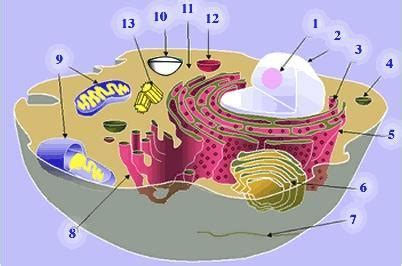During cell respiration, the process by which cells convert food into energy, adenosine triphosphate (ATP) plays a pivotal role. ATP serves as the primary energy currency of the cell, powering various cellular processes including muscle contraction, nerve impulse transmission, and chemical synthesis.

The production of ATP occurs within specialized organelles called mitochondria, which are often referred to as the “powerhouses of the cell.” Mitochondria are double-membrane organelles with a unique structure that facilitates the efficient generation of ATP.
Mitochondria: The ATP Factory
Mitochondria are dynamic organelles that undergo constant fusion and fission, forming a network within the cell. Each mitochondrion consists of:
- Outer mitochondrial membrane (OMM): A porous membrane that allows small molecules to pass through.
- Inner mitochondrial membrane (IMM): A highly impermeable membrane that contains numerous folds called cristae.
- Mitochondrial matrix: The fluid-filled space within the mitochondrion that contains enzymes and other components involved in energy production.
The IMM is critical for ATP production as it harbors the electron transport chain (ETC), a series of protein complexes that utilize the energy from NADH and FADH2, electron carriers generated during glycolysis and the Krebs cycle, to pump protons across the membrane.
ATP Production via Oxidative Phosphorylation
The electrochemical gradient created by the proton pumping drives ATP production through a process called oxidative phosphorylation. Here’s how it works:
-
Electron transport: Electrons from NADH and FADH2 are transferred through the ETC complexes, releasing energy.
-
Proton pumping: The energy released from electron transport is used to pump protons from the mitochondrial matrix into the intermembrane space.
-
ATP synthase: As protons flow back into the matrix through ATP synthase, an enzyme located in the IMM, the energy released is used to synthesize ATP from ADP and inorganic phosphate.
ATP Yield: The Efficiency of Energy Production
The efficiency of ATP production varies depending on the type of substrate being respired. For example, the complete oxidation of one glucose molecule via glycolysis, the Krebs cycle, and oxidative phosphorylation generates approximately 36-38 molecules of ATP. This process is highly efficient, allowing cells to extract a significant amount of energy from food.
Applications of Mitochondrial ATP Production
The fundamental role of mitochondria in ATP production has far-reaching implications beyond cellular metabolism. Mitochondrial dysfunction can lead to a wide range of diseases, including neurodegenerative disorders, cardiovascular disease, and cancer.
Understanding mitochondrial ATP production has also spurred the development of novel therapeutic approaches, such as:
- Mitochondrial replacement therapy: Replacing defective mitochondria with healthy ones to treat mitochondrial diseases.
- Pharmacological interventions: Targeting mitochondrial proteins involved in ATP production to enhance energy metabolism in aging or diseased cells.
Conclusion
Mitochondria, as the numbered organelle responsible for ATP production during cell respiration, play a vital role in cellular function and overall health. By producing ATP, mitochondria provide the energy necessary for essential cellular processes, making them indispensable for life as we know it. Ongoing research into mitochondrial ATP production promises to unlock new avenues for treating diseases and enhancing human health.
